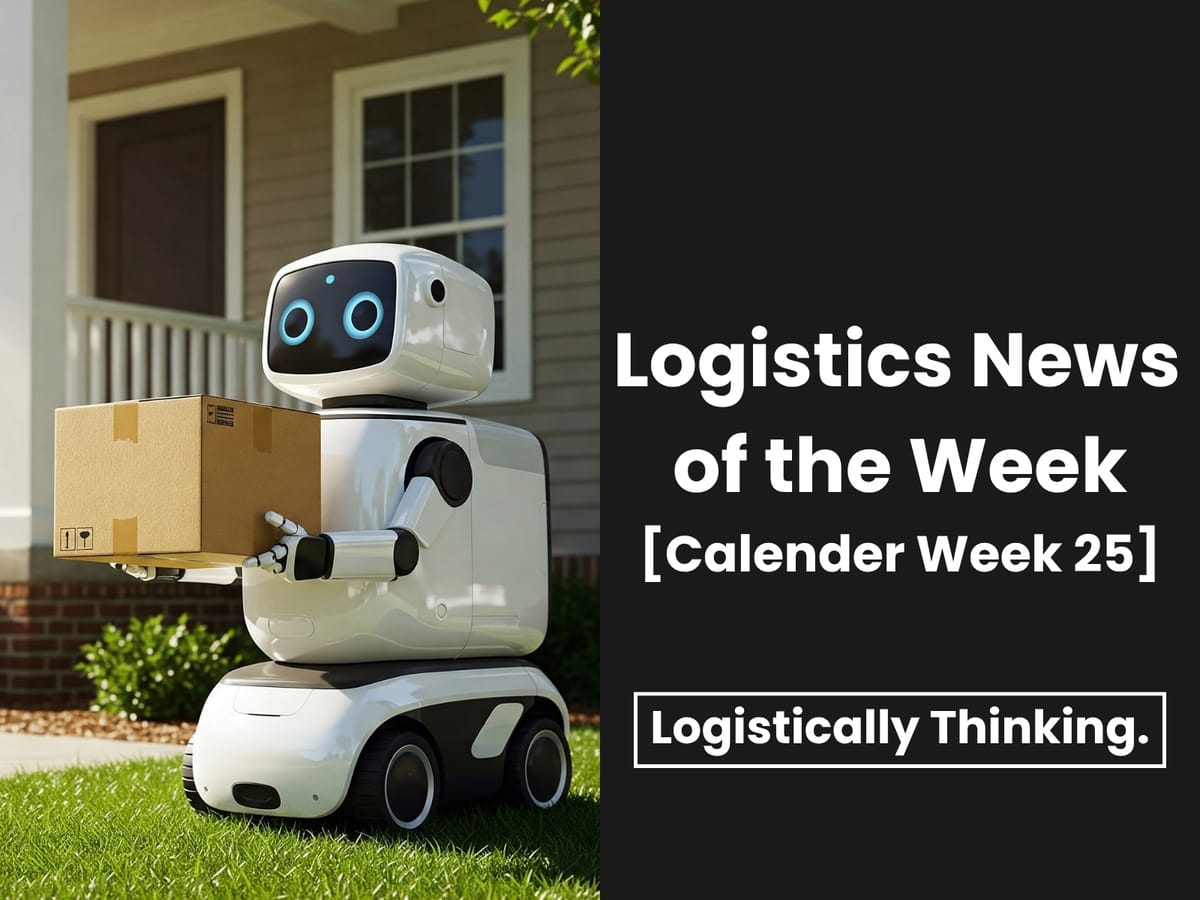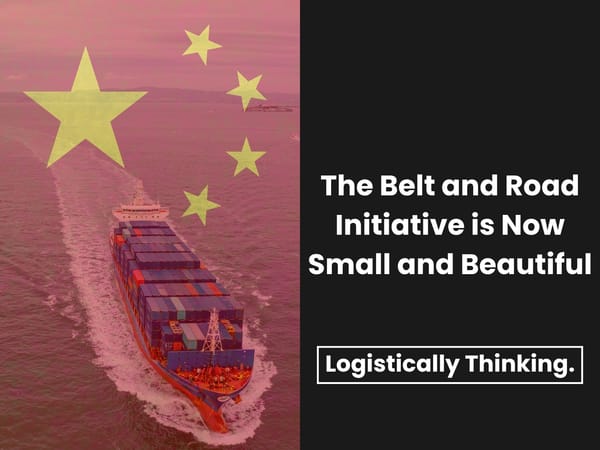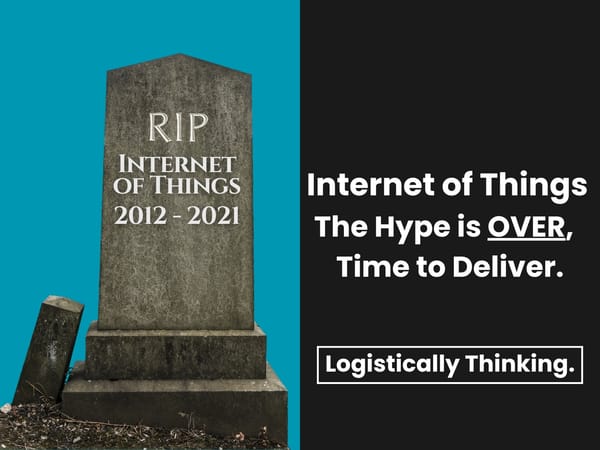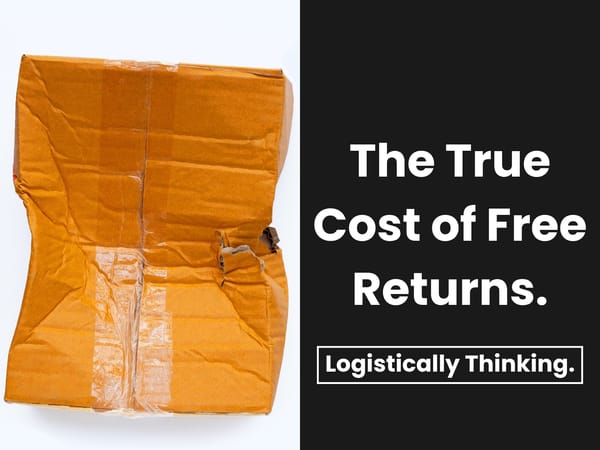Logistics News of the Week (Calendar Week 25)
Global trade suffers from tariff whiplash & port paralysis, while Amazon makes a significant bet on humanoid robots.

Here are the most significant logistics and supply chain stories from around the world for Calendar Week 25.
1. The Great Tariff Whiplash Continues
Originally reported by multiple outlets, including Reuters.
Abrupt, politically motivated shifts in US tariff policy continue to cause a chaotic 'front-loading' surge that has sent freight rates soaring and rendered seasonal planning obsolete.
Key Details
- A temporary 90-day pause on US tariffs on Chinese imports, expiring August 13, has forced retailers into a frantic race to front-load inventory for the second half of the year.
- This strong demand surge caused ocean freight spot rates to skyrocket in early June, with Asia-US West Coast rates jumping 58%, placing immense strain on US ports and creating severe congestion.
- In response to the volatility, 48% of companies report they are actively seeking to shift sourcing to other countries, signaling a possible permanent, structural change in global supply chain design.
Logistically Thinking's View
Geopolitical volatility continues to render traditional forecasting models ineffective and forces a fundamental shift in strategy: the primary objective for supply chain design must now evolve from pure cost optimization to resilience optimization. This acute pain provides the strongest business case yet for accelerating diversification away from single-source, China-centric models. The strategic exodus will spur a new wave of investment in logistics infrastructure and technology in emerging manufacturing hubs, particularly in Southeast Asia and Mexico.
2. Europe's Ports Are Paralyzed
Originally shared as an advisory from Maersk.
A perfect storm of labor strikes, infrastructure bottlenecks, and shifting carrier alliances has plunged Northern Europe's key container ports into their worst congestion crisis since the pandemic, forcing major carriers to bypass critical hubs.
Key Details
- Congestion is most severe at major hubs like Rotterdam, Antwerp, and Hamburg, with vessel waiting times extending up to seven days and terminal occupancy exceeding 95%.
- The crisis is a cascade failure caused by a perfect storm of persistent labor strikes, widespread rail construction, and critically low water levels on the Rhine hampering barge traffic.
- Underscoring the severity, Maersk announced it will completely bypass the Port of Rotterdam on a key service, a drastic move that signals the system's buffer capacity is exhausted.
Logistically Thinking's View
This crisis reveals the inherent fragility of a European logistics network overly dependent on a few mega-hub ports. It forces an urgent re-evaluation of the classic hub-and-spoke model and strengthens the business case for utilizing a more distributed network of smaller, secondary ports that can now market themselves on reliability. Moreover, the disruption highlights that port efficiency is meaningless if the inland distribution network is broken. A truly robust strategy requires dynamic, multi-modal routing capabilities that can shift cargo seamlessly between truck, rail, and barge in response to real-time disruptions.
3. Amazon's Humanoid Bet to Solve Last Mile
Originally reported by multiple outlets, including The Guardian.
Amazon is actively testing humanoid robots for last-mile package delivery, a high-stakes bet on fundamentally reshaping the labor economics and service capabilities of e-commerce by automating the final, most complex steps of the delivery process.
Key Details
- Amazon is reportedly operating a humanoid park to develop the AI software required for bipedal robots to travel inside its delivery vans and carry packages to customers' doorstep.
- The initiative targets the most inefficient part of the entire delivery process, a segment that accounts for an estimated 53% of total shipping costs and is constrained by labor availability.
- The strategy appears focused on developing the proprietary AI brain while using third-party hardware—a classic platform approach to maximize leverage and scalability.
Logistically Thinking's View
This project is a strategic attack on the single biggest cost and constraint in e-commerce logistics: human labor. By aiming to automate the final steps from the van to the door, Amazon is targeting an inefficiency that, if solved, would create a monumental cost advantage and fundamentally alter the competitive dynamics of the global parcel industry. The choice of the humanoid form factor is a brilliant bet on achieving infrastructure-free automation. Unlike drones or sidewalk bots, a bipedal robot is built to navigate a world made for humans. A perfected robot could climb stairs and open gates without requiring any modification to the existing environment, making the potential market for this technology vastly larger than wheeled or airborne alternatives.




